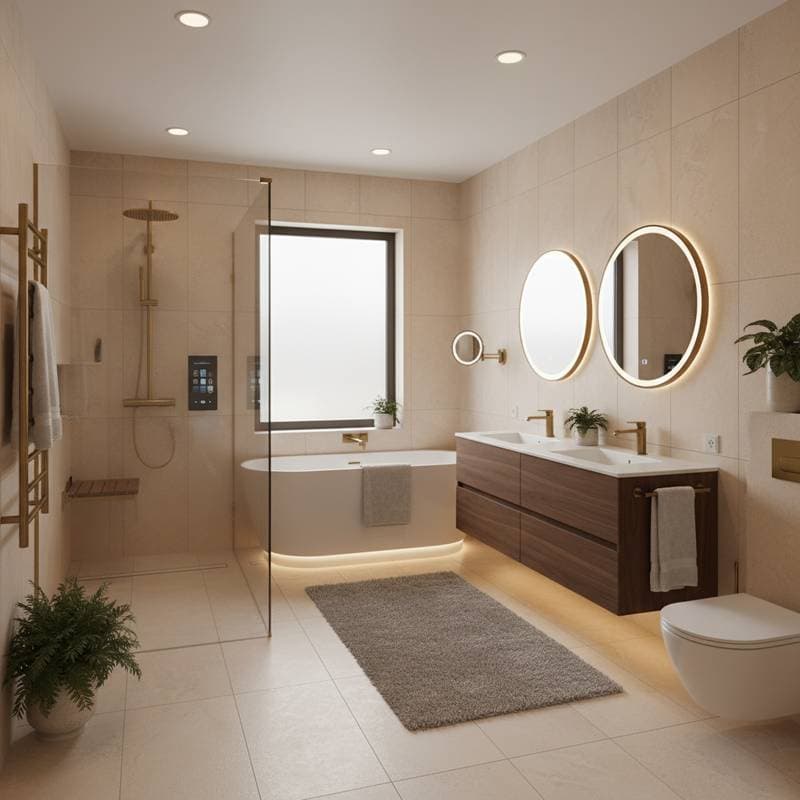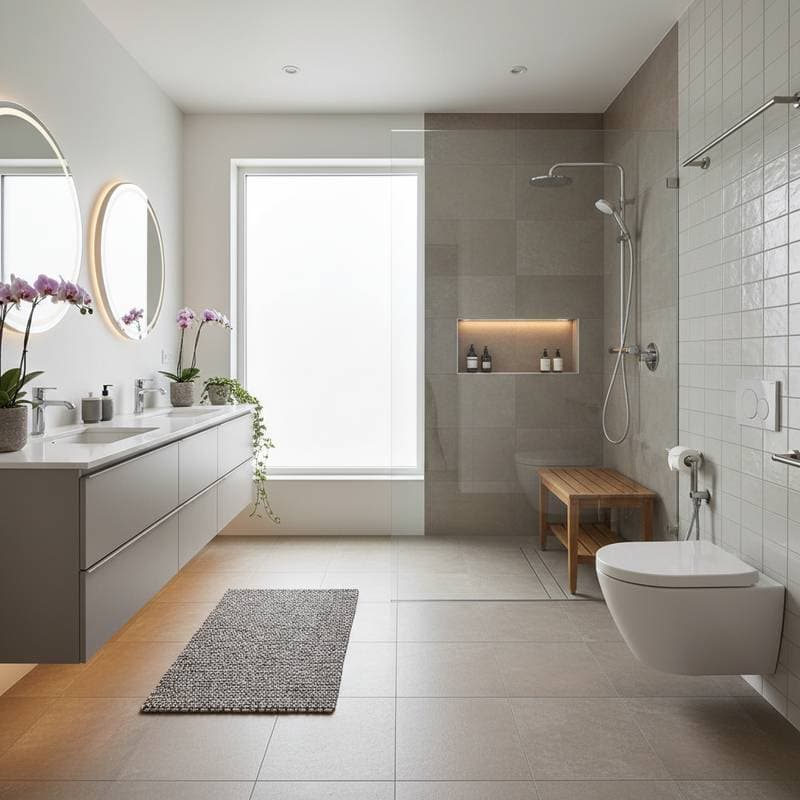Granny Pod Bathrooms: Essential Safety Designs for Aging in Place
Granny pods, those compact, self-contained living spaces often built in a family’s backyard, have surged in popularity as a solution for aging in place. These units allow seniors to maintain privacy and independence while staying close to loved ones. However, the bathroom within a granny pod stands out as the most critical area for safety and functionality. A poorly designed bathroom can lead to falls or injuries, while a thoughtfully crafted space can preserve autonomy and provide peace of mind.
This article offers a detailed guide to designing granny pod bathrooms that prioritize safety without sacrificing style. Drawing from expert insights, we will explore must-have features, budgeting tips, and strategies to avoid common pitfalls.
Key Safety Features for Granny Pod Bathrooms
When designing a bathroom for seniors, safety and accessibility form the foundation. Below are the essential elements to include for a secure and user-friendly space.
1. Zero-Threshold Showers for Seamless Access
A shower without a curb or step eliminates tripping hazards, making it ideal for seniors with limited mobility. Opt for a roll-in design with a slip-resistant surface and ensure the floor slopes toward the drain to prevent water pooling. This feature not only enhances safety but also accommodates future needs, such as wheelchair use.
2. Strategically Placed Grab Bars
Grab bars provide crucial support, but their placement matters just as much as their presence. Install them near the toilet, inside and outside the shower, and along entry paths, securing them into wall studs for maximum stability. This setup offers reliable assistance during daily routines.
3. Comfort-Height Toilets for Ease of Use
Standard toilets often sit too low, straining knees and hips when seniors sit or stand. A comfort-height toilet, elevated by a few inches, reduces this physical burden. Pair it with a nearby grab bar for added security.
4. Non-Slip Flooring to Prevent Falls
Aesthetic appeal should never compromise safety. Choose textured porcelain tiles, vinyl planks, or rubber flooring for traction, especially in wet areas. These materials are durable, easy to maintain, and significantly lower the risk of slips.
5. Lever Handles and Touchless Controls
Round knobs can be challenging for hands affected by arthritis. Replace them with lever-style handles on faucets, showers, and doors for effortless operation. Motion-activated or touchless fixtures further simplify use, minimizing strain.
6. Bright, Even Lighting
Poor visibility increases the likelihood of accidents. Combine overhead fixtures, vanity lighting, and motion-sensor night lights to eliminate shadows and ensure a well-lit environment at all hours. This setup helps seniors navigate safely, day or night.
7. Wide Doorways and Ample Maneuvering Space
Accessibility extends beyond fixtures to the layout itself. Design doorways at least 32 inches wide, ideally 36 inches, to accommodate wheelchairs or walkers. Inside the bathroom, allow a 5-foot turning radius for ease of movement.
Budgeting for a Safe and Functional Design
Creating a granny pod bathroom requires a financial commitment, though it often proves more cost-effective than assisted living options. Costs depend on materials, size, and complexity, but a typical remodel ranges from $20,000 to $40,000. Consider these price estimates for key elements: zero-threshold showers at $5,000 to $12,000; grab bars and wall reinforcements at $800 to $2,000; comfort-height toilets at $500 to $1,200; non-slip flooring at $3,000 to $7,000; lighting upgrades at $1,000 to $3,000; and accessibility modifications like wider doorways at $2,000 to $6,000. Planning with these figures helps balance safety needs with financial realities.
Avoiding Common Design Mistakes
Miscommunication between families and contractors often leads to costly errors. For instance, unclear specifications about doorway widths or grab bar placements can result in rework. To prevent such issues, discuss exact measurements, material preferences, and fixture placements in detail before construction begins. A written agreement outlining every aspect of the project ensures alignment and protects all parties.
Building for Tomorrow’s Needs
Even if a senior is currently mobile, designing with future limitations in mind saves time and expense later. Features like wider doorways and roll-in showers may seem unnecessary now, but they become invaluable as mobility needs change. Adopting a forward-thinking approach during the initial build avoids the hassle and cost of retrofitting. This mindset transforms the bathroom into a lasting, adaptable space.
Creating a Space for Independence
A well-designed granny pod bathroom does more than prevent accidents; it fosters confidence and autonomy for seniors. By integrating essential safety features, maintaining clear communication during planning, and anticipating future needs, families can craft a space that supports aging in place effectively. Take the time to prioritize quality and detail in every decision. The result will be a bathroom that not only meets immediate needs but also offers enduring security and comfort.










